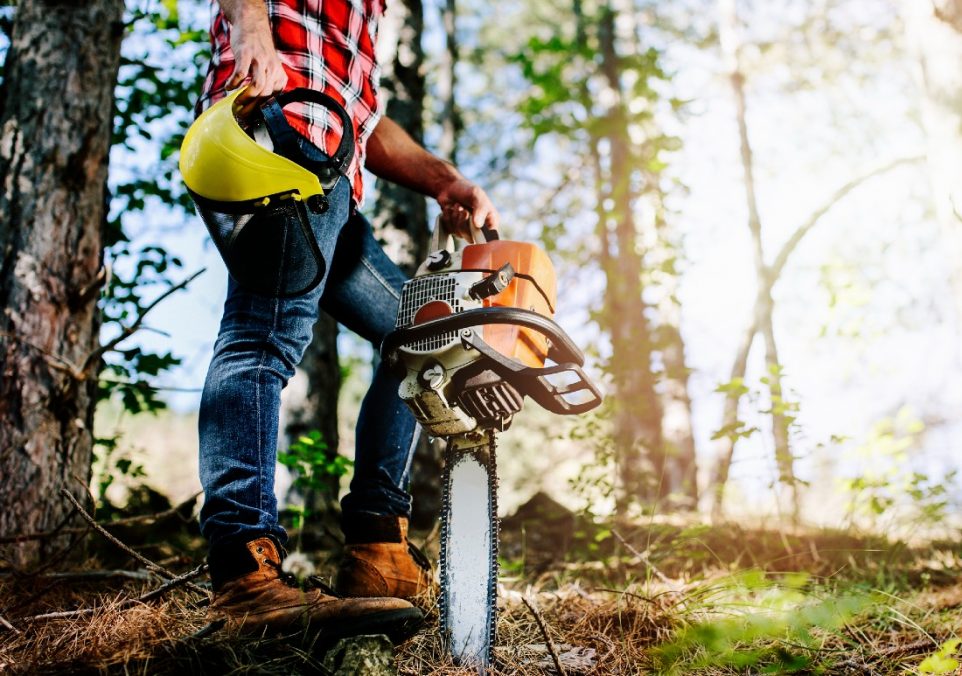A Beginner’s Guide to Chainsaws

Chainsaws are a powerful tool for cutting logs, branches, and more. They offer you the power to tackle tough pieces of wood quickly and effectively. But, before you start using a chainsaw, you need to know how to operate it safely and effectively. That’s why we’ve created this beginner’s guide to chainsaws.
In this blog post, we’ll discuss the different types of chainsaws available, the safety precautions you should take when using a chainsaw, and the basics of operating one properly. We’ll also share advice on troubleshooting common issues and maintaining your chainsaw to keep it operating smoothly for years. Whether you’re a beginner or an experienced chainsaw user, this guide has something for everybody.
Types of Chainsaws
There are three main types of chainsaws: electric, cordless, and gas. Each type has its own advantages and disadvantages. Knowing the differences can help you choose the best chainsaw for your needs.
Electric Chainsaws
Electric chainsaws are powered by an electrical motor. They typically have lower power outputs than gas or battery-powered models but are lighter and easier to use. Electric chainsaws can also be quieter than gas models and require less maintenance, making them an attractive choice for occasional use in small worksites or around the yard.
Cordless Chainsaws
Cordless chainsaws are powered by a battery. Like electric chainsaws, they usually have a lower power output than gas models but they’re lightweight and easy to use. The main advantage of cordless chainsaws is that they don’t require access to electrical outlets so you can use them anywhere.
Gas Chainsaws
Gas chainsaws are powered by an internal combustion engine and typically have the highest power output of all three types of chainsaw. They’re also heavier than other types and require more maintenance but are a good choice for heavy-duty work on larger projects or in commercial settings.
Maintenance and Care
Maintaining your chainsaw is essential for its safe and long-term operation. Regularly inspect components like the chain tensioner, clutch drum, air filter, cylinder fins, spark plug, fuel filter, muffler guard, bar oil leveler, starter rope puller, and throttle control to identify any potential issues before they become serious problems. Additionally, replacing the chainsaw chain regularly and keeping the chainsaw bar oil levels topped off will ensure it is always running as efficiently as possible.
Troubleshooting Common Issues
If your saw isn’t working correctly or is emitting unusual sounds or smells there could be a few different issues at play such as worn-out blades or inadequate lubrication, an incorrect spark plug gap, a fouled plug, a clogged air filter, fuel contamination, or worn out bearings. An experienced mechanic should be able to identify what might be wrong with your saw by inspecting it closely or running simple tests like checking the spark plug gap or measuring compression pressure.
Cutting Techniques
Using the proper cutting technique is key to safety when handling any type of saw. Ensure you have a firm grip on the saw with both hands while keeping it close to your body for optimal control and balance. Start cutting at full throttle with steady pressure until the saw blade has made its way through the wood before releasing the throttle trigger and allowing the saw blade to coast out of the wood safely while avoiding kickback from binding forces caused when encountering knots or other inconsistencies in the wood grain structure during cutting operations
Conclusion
By understanding all these aspects of using a chainsaw — from types of chainsaws to maintenance to cutting techniques — you’ll be well-prepared to make an informed decision when it comes time to purchase and use your own chainsaw. We hope this beginner’s guide helps you make the most out of this heavy-duty tool to tackle your outdoor projects!